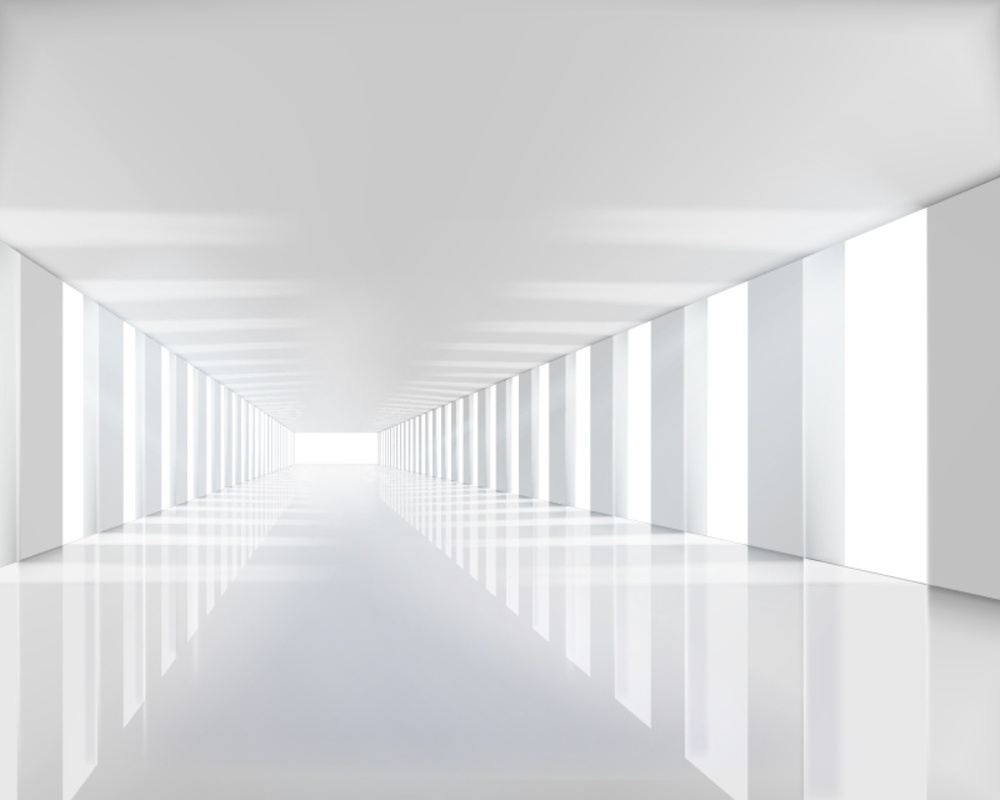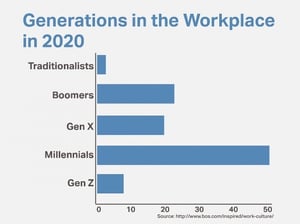 When building a new corporate office for your brand, you’re leaving a legacy for future generations. A typical office design should remain relevant for about 20 years, which means it should be designed with future generations in mind.
When building a new corporate office for your brand, you’re leaving a legacy for future generations. A typical office design should remain relevant for about 20 years, which means it should be designed with future generations in mind.
The generations we're designing for now are Generation Y, also known as Millennials, and Generation Z, who are fast on the heels of Gen Y.
Millennials, Generation Z, and Technology
The Millennial and Generation Z cohorts are digital-native generations. According to Wikipedia, Generation Z is described as those born after Millennials, with birth dates ranging from the late 1990s through to the 2010s. It has a large economic footprint, and at 26% of the U.S. population, they command $44 billion in annual spending. They’ll be entering the U.S. workforce in the next 3-5 years.
But more importantly, this generation is a mobile-first generation. Wikipedia says:
“With 77% of 12–17 year olds owning a cellphone in 2015, technology has strongly influenced Generation Z in terms of communication and education. Forbes magazine suggested that by the time Generation Z entered the workplace, digital technology would be an aspect of almost all career paths.”

Today, people are using smartphones to do everything, from online banking, to pre-ordering coffee at Starbucks, and calling an Uber car or booking an AirBNB room. But for the Millennials and Generation Z, these services aren't just a convenience, they're an expectation. These generations with their digital-first posture will become the leaders and executives of tomorrow, and will expect to work in facilities that are as personal and flexible as the technology they’re accustomed to using.
Experts estimate this will be the generational distribution in the workplace by 2020. As Traditionalists and Boomers retire in large numbers, the Millennials and Gen Z will quickly fill their places.
The Impact of Technology
Technology is thus an important design driver. Corporate offices are becoming call-centers, data centers, and collaboration centers all in one - and this is no less true for companies with widespread networks.
 For example, a Canadian credit union we recently worked with has a corporate headquarters in the middle of the great northern provinces near Alaska. Technology was central to their culture. And it was extremely important that it was also central to their headquarters design as they relied heavily on technology to serve their far-flung branches, employees and members.
For example, a Canadian credit union we recently worked with has a corporate headquarters in the middle of the great northern provinces near Alaska. Technology was central to their culture. And it was extremely important that it was also central to their headquarters design as they relied heavily on technology to serve their far-flung branches, employees and members.
It’s important that we plan, not just for today’s technology, but for what’s to come. While it’s hard to predict what our tech needs will be in the future, we can design spaces that are flexible enough to adapt to new technologies through the years.
The Next Generations’ Expectations of Work
Today, younger generations of employees and tomorrow’s future leaders have a different view of their professional mission. For Millennials, feeling fulfilled at work is more important than having the corner office. That aspiration is reflected in some of the more iconic brands in the Silicon Valley today, such as Google and Facebook: the use of open spaces and recreational facilities. Even at our own company headquarters we’ve designed open spaces and collaborative environments to inspire introspection as well as collaboration and connection.
The employee experience has become a central part of the design process. Now, more than ever, employers are looking at the entire journey people take through their workday--from the moment they drive up to the building through the areas in which they learn, collaborate, and recharge--to help stage positive, fulfilling experiences at work.
Ideation Workshops and Diversity
To effectively design a corporate facility that’s able to serve the generations to come, it’s important to include members of the younger, technology savvy generations in the planning process.
At NewGround this planning process is often launched with an Ideation Session designed to help uncover the true essence of your brand and culture, so that, later, we can express those elements in a unique building design. But to ensure your Ideation Session produces a design direction that is appropriate for future generations, including a diverse team to participate in the session is a must.
In addition to including the top brass of the organization - the CEO, the CFO, and CMO - we also encourage the participation of the next generation of managers, administrators and employees. Including diversity of gender, ethnicity, race, and generations will ensure a building design that will serve you well for the next 20+ years.
Leaving a Legacy
Most workplaces today weren’t designed with enough flexibility to accommodate the changes that the last 10 years of technological advancements and the Millennial-disruption have brought us. Which means companies are finding themselves in buildings that are less than enticing to new, young talent.
When designing your new corporate office, think carefully about the trends affecting the workforce of the future. Obviously technology is a huge factor, with Millennials and Generation Z being the first “digital native” generations that will dominate the workforce.
Culture also plays a huge role. The newer generations value purpose, mission and satisfaction over some of the more tangible, materialistic trappings of success typical of the 20th Century.
And then there’s the huge unknown. What will the work-styles the generations coming after Generation Z look like? And what major technology changes will accompany them?
The greatest legacy you can leave to future generations is a work space that is flexible enough to adapt to the changes that are still to come.
To learn more about how NewGround helps you through every phase of the building process from design to build, click on the link below.